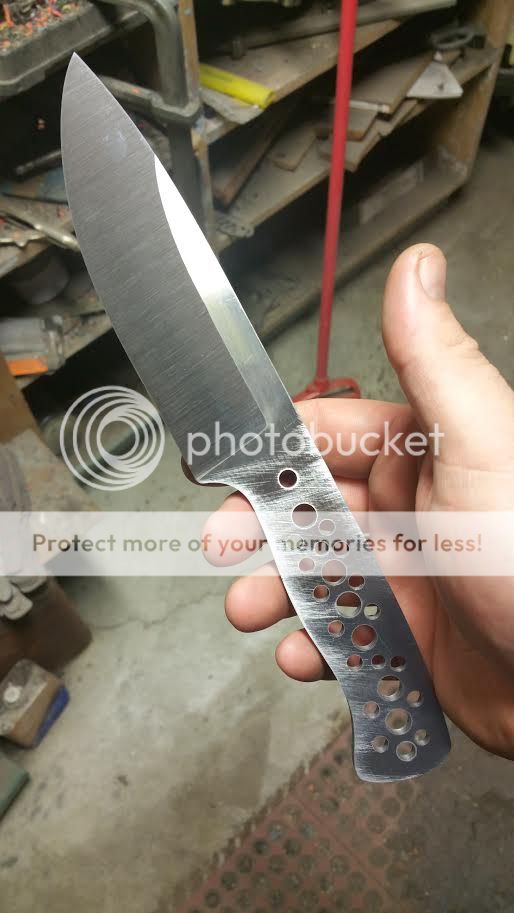Greetings,
I haven't read through all the posts, so I'm probably restating what others may have covered.
Probably the biggest variable (at least in my mind) for designing a 'survival' knife is it a 'stand alone' cutting implement in the situation, or is it part of a larger kit where you're going to have other tools...axe, saw, multi-tool, SAK, etc. If its going to be the only cutting tool you have, its design will probably vary considerably compared to if its going to be part of a larger system or gear available. Put another way, it can be quite a bit simpler, smaller, lighter weight if you'll have other tools at hand. It it's going to be the 'one and only,' and expected for a longer trip, additional features...serrated/saw edge, pry points, etc might become more of a consideration.
A secondary consideration is what do you give priority to: Pure cutting ability or durability? If you really want the ability to slice ultra-wafer thin slices of tomatoes in your 'survival' knife? Or are you wanting a thicker more durable edge that might not slice as well? In a survival knife, IMHO, the nod goes towards the durability scale.
When I actually am able to get away for more than ~1 hr. trail walk, I usually have a couple three cutting tools with me.
To cover the basic chassis, leaning more the 'one and only' knife:
1. Full tang construction of a good, tough stainless steel (3V, etc). to minimize corrosion concerns, so it can be left uncoated for cleanliness/hygiene/food prep.
2. At least 3/16" thick, probably more towards 1/4" if the blade is over 6 inches (which I prefer in a stand-alone field knife).
3. Blade 5-8" in length. Big enough to get the job done, but not so big as to be cumbersome or unwieldy
4. Strong tip with the full blade thickness carried as close to the tip as practical.
5. High saber-type grind for cutting, but not taken super thin behind the edge for durability.
6. Brightly colored (Blaze Orange) ergonomic grip of high durability/grippy material (micarta, Kraton, etc) and a positive guard.
7. Traction/stippling pads (like what Buck has done on some models) above the grind line for gripping
8. Drop Point or something of clip point with serrations in the clip portion (ala Buckmaster) if fiber materials are expected routinely. This would leave the spine for those that simply must baton.
9. Functional, flat pommel that could easily withstand light hammering chores.
10. Choil ability to 'choke up' for finer work and sharpening.
11.Straight edge (no recurve) for simplicity and ease of sharpening.
12. Good sheath, similar to SpecOps with of hi viz materials, and good pouch for carrying additional items (lighter, fishing kit, etc).
13. Good, functional lanyard.
14. Priced at $29.95 or less

(Kidding, but price would be a determining factor...you'd want it to be at least semi-affordable to the bulk of your target audience).
Just off the top of my head...YMMV.
And FWIW, I'm in a similar boat...after a few years of having extremely limited 'trail time,' I'm hoping that starting in the very near future we're able to get a lot more family time in the woods.
BOSS






